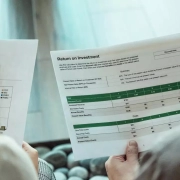What is spouse contribution and contribution splitting?
Table of Contents
ToggleAre you considering splitting contributions to your superannuation fund with a spouse? With the complexity of Australian tax and superannuation laws, it can be difficult to understand how spouse contribution and contribution splitting works in Australia.
In this blog post, we will discuss the basics – understanding what options are available, eligibility criteria and even the potential benefits of taking advantage of these initiatives. We’ll also explore how couples can talk about their finances together so that they make informed decisions that suit their individual financial situations.
Regardless of whether you’re looking for information on tax deductions or simply exploring all avenues to grow your retirement savings faster, this blog post is full of useful advice.
What is spouse contribution and contribution splitting?
When it comes to finances, understanding the ins and outs of spouse contributions and contribution splitting can be crucial. So what exactly are these terms referring to?
Spouse contributions are payments made by a person on behalf of their partner’s super fund account. Meanwhile, contribution splitting allows couples to split their super contributions and move them between their accounts. These options can provide potential tax benefits and help couples build their retirement savings together.
It’s important to do your research and make informed decisions when it comes to your finances, and knowing about spouse contributions and contribution splitting can be a helpful tool in that process.
How contributions are split between spouses in Australia?
In Australia, when spouses make financial contributions to a shared asset- such as a family home- the law generally takes into account both monetary and non-monetary contributions when determining how assets are split in the event of a separation or divorce. This means that the contributions of each spouse to the relationship, whether it be through paid work or caring for children, is taken into consideration.
Legal procedures have been put in place to ensure that equal consideration is given to the efforts of both partners. This not only helps to divide assets fairly, but also recognizes the diverse contributions that may be made by each individual in a relationship.

Eligibility criteria for spouse contribution and contribution splitting
Navigating tax laws and eligibility criteria can be a confusing process, especially when it comes to something as important as spouse contributions and splitting.
In Australia, if you are looking to make a contribution to your spouse’s superannuation account, it’s important to first ensure that they meet the eligibility criteria. This can include factors such as their age, work status, and residency status.
Additionally, if you are considering splitting your super contributions with your spouse, there are specific guidelines that must be followed, such as ensuring that the split is completed before the end of the financial year and that both parties meet the required contribution thresholds.
While the process may seem overwhelming, taking the time to understand the eligibility criteria and guidelines can lead to significant benefits for both you and your spouse’s financial futures.
Benefits of spouse contributions and contribution splitting
In Australia, the contributions made by spouses can have a significant impact on the retirement savings of both partners. Not only do these contributions help to boost the overall savings pool for the couple, but they can also be split between spouses for tax purposes.
Contribution splitting allows for a more equitable distribution of superannuation savings, which can be particularly important in cases where one spouse earns significantly more than the other.
By taking advantage of the benefits of spouse contributions and contribution splitting, Australian couples can work together to achieve their retirement goals.

Cost considerations when making a spouse contribution
Making a spouse contribution is a great way to boost your partner’s retirement savings. However, it’s important to consider the costs involved.
- Keep in mind that you can only claim a tax offset for spouse contributions of up to $3,000 per financial year.
- If your spouse’s total super balance is over $1.6 million, you won’t be eligible to make any further contributions for them.
- There may be fees associated with setting up a super account for your spouse or for making the contribution itself.
By carefully considering these costs and planning accordingly, you can ensure that your spouse’s contribution is a smart financial move for both you and your partner.
Tips for maximising the benefits of spouse contributions and splitting contributions
When it comes to making contributions to your superannuation fund in Australia, there are a few tips and tricks that can help you to maximise the benefits.
- If you’re married or in a de facto relationship, then you have the option to make spouse contributions, which can help to boost your partner’s superannuation balance as well as your own.
- It’s possible to split contributions with your partner, which means that you can take advantage of the tax benefits of superannuation contributions even if you’re not earning an income.
By understanding how these strategies work and taking advantage of them, you can help to ensure a more comfortable retirement for both you and your loved ones.

A spouse contribution or contribution splitting can provide great advantages for couples planning to invest. It’s important to have an understanding of the definition of spouse contribution and how it works before taking the leap into investing together. It is also important to consider both the benefits and cost associated with this type of investment.









